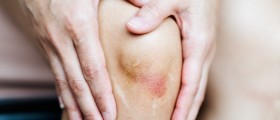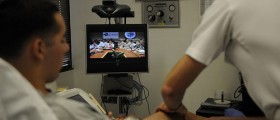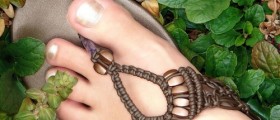
There are several different types of ringworm in humans. It is important to recognize the symptoms so, it can be properly diagnosed and treated. This condition is not dangerous but it is contagious and should be treated before other persons get infected.
Contrary to what its name indicates, a ringworm is not a worm. It is a fungal infection caused by different species of fungus. It affects humans, pets, especially cats and dogs, and domestic animals like sheep and cattle.
Human body is inhabited by different types of bacteria and fungus. Most of them are harmless and are there for a specific function. It can be safe to say that humans and those organisms live in symbiosis, because humans can actually benefit from some of them. However, fungus can multiply and overgrow in certain regions of the body, causing an infection. Ringworm is one of those infections, and it affects skin, scalp, nail, feet, groins, and other parts of the body.
Skin ringworm symptoms
When a ringworm affects the skin, the condition is called Dermatophytosis. The name of the disease comes from the ring-shaped mark that appears on the affected skin. The ring is actually a rash and it is usually red. As the infection progresses, the rash becomes a lesion and it becomes less red.
The rash may develop and form several rings, which may blend together. The rings are slightly elevated from the skin and they itch. In severe cases, a blister may form around the ring.
Scalp ringworm symptoms
If the fungus has affected the scalp, meaning the skin on the head, it is called tinea capitis.
The symptoms of tinea capitis usually include patchy hair loss, small scales on the skin that look like lesions or sores, and itching of the scalp.
In severe cases, tinea capitis, or scalp ringworm, causes rash, crusts and blisters on the scalp.
Nail ringworm symptoms
Tinea ungium is the medical term for ringworm that affects nails. It can affect both fingernails and toenails, which become yellow, thick and brittle. The color may even change to green or black, and severely thickened nails may fall off. The skin around the affected nail may become irritated and sore.
Foot ringworm symptoms
Athlete’s foot is the common name used to describe foot ringworm or tinea pedis. It is a common infection with symptoms such as rash, particularly between toes, dry, red and scaly skin, cracked skin, blisters, swelling of the skin and burning sensation. If the skin is severely dry and scaly, it may crack, exposing the tissue, and it may lead to a secondary infection.
The infection can spread from feet to groins, and it is then called tinea cruris or jock itch. The symptoms include inflammation, irritation, redness and soreness of inner thighs, red or brown sores, blisters, itching, scaly and flaky skin.

















Your thoughts on this
Loading...